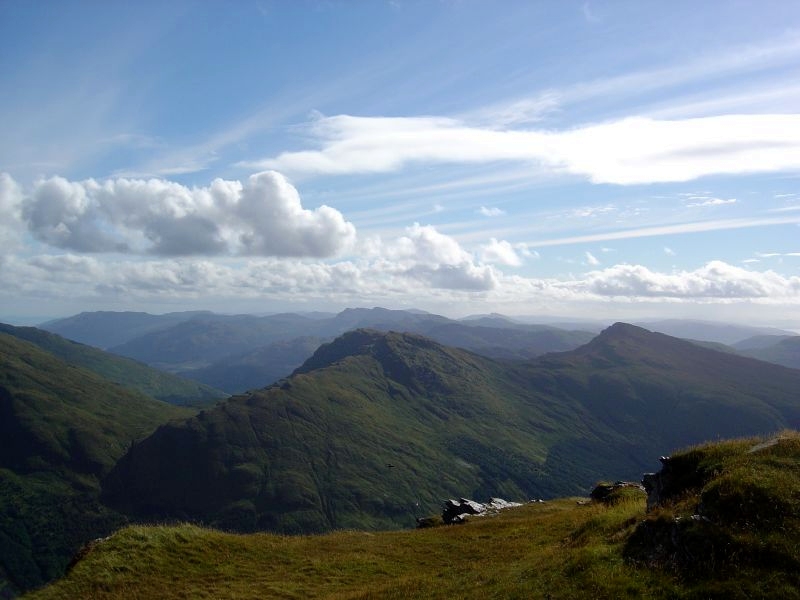
Motto: This I'll defend
Historic Seat: Arrochar
District: Lennox
Associated Surnames: Allan, Allanson, Bartholomew, Bryce, Caw, Condy, Griesck, Gruamach, Kinnieson, Knox, MacAindra, MacAllan, Maccaa, MacCause, MacCaw, MacCondy, MacEoin, MacErracher, MacGaw, MacGeoch, MacGreusich, MacInally MacInstalker, Maciock, MacJames, MacKinlay, MacNair, MacNeur, MacNider, MacNitter, MacRob, MacWalter, MacWilliam, Miller, Monach, Parlane, Parlin, Robb, Stalker, Weaver, Webster, Weir, Whannell, Wylie
Associated Tartans:
Early MacFarlane Genealogy and History:
(Excerpt from "The Scottish Clans and Their Tartans", James Grant, 1906)
This clan and surname are descended from the ancient Celtic Earls of the district to which they belonged - the Lennox. "The wild MacFarlane's plaided clan" occupied the land forming the western shore of Loch Lomond from Tarbet upwards. From Loch Sloy, a small sheet of water near the foot of Ben Vorlich, they took their Cathghairm1 of "Loch Sluia." The remote ancestor of this clan is said to have been Duncan MacGilchrist, a younger brother of Malduin, Earl of Lennox. Duncan appears in the Ragman Roll of 1296. His grandson was Bartholomew, which in Gaelic is Parlan, from whom the clan are designed, the letters P and F being easily convertible in Gaelic. Robert I granted a Charter to Dougal MacFarlane of the lands of Kindowie, Argushouche, etc.
Malcolm was the sixth Laird, and got from Duncan, Earl of Lennox, a Charter of lands of Arroquhar, in the north-west of Dumbartonshire, dated at the Castle of Inchmurrin in 1395. The direct male line of these ancient chiefs failed, and their estates were forfeited. By marriage with a daughter of the Earl of Lennox Andrew MacFarlane succeeded in 1493; but his son was only allowed the title of Captain of the clan. Sir John MacFarlane of that Ilk was slain at Flodden2; he had been knighted by the King the night before the battle.
The MacFarlanes emulated the MacGregors in their raids upon the Lowland districts as much as their limited number allowed.
There was a bond of Manrent3 granted to Hugh, Master of Eglinton, in 1545 by Duncan, uncle to the Laird of MacFarlane, at Irwine. Walter MacFarlane of Tarbet was among the slain at Pinkey4 in 1547. At Langside5, in 1567, they fought under Murray's banner.
In 1578 it would appear from the Privy Council Register that the clan were guilty of considerable bloodshed. Andrew MacFarlane of Arroquhar and that Ilk appears in the Rolls of Landlords in 1587 who were made by Parliament responsible for their clans. In 1594 the MacFarlanes were denounced as robbers and oppressors: and in 1608 the old standing feud between them and the Colquhouns culminated in the slaughter of the Laird of Luss, and they were declared rebels by law. This did not prevent them from following Montrose in 1644-45, and their wild pibroch6, Thogail nam bo, was heard in many of his battles. At Bothwell Bridge7, in 1679, they were among the foremost in storming the gateway through which the Guards charged.
Walter MacFarlane of that Ilk was one of the most learned antiquaries of the last century. A portrait of him was presented by his son Walter in 1794 to the Antiquarian Society of Scotland. Robert MacFarlane, one of the clan, an eminent political and miscellaneous writer, born in Scotland in 1734, was author of various historical works, such as "The Rights of the Crown at Scotland," "The Authenticity of Ossian," etc. He was killed by a fall from a carriage at Hammersmith in 1804.
Another of the clan, Major-General MacFarlane, under fire of the guns of H.M. Ships Warrior and Success, in 1809 led the British troops with distinguished bravery at the storm and capture of the Island of Ischia, in the Bay of Naples, and afterwards at the capture of Procida.
In 1624 many of the clans were driven out of Arroquhar and went to Aberdeenshire, where they assumed the names of MacCondy, Griesck, MacInnes, etc. The last descendant of the chiefs is said to have gone to America at the end of the last century; and his house of Arroquhar became the property of the Duke of Argyll, and was long used as an inn for travellers from Tarbet to Glencoe and Inverary.
(End excerpt)
Next page: Clan MacFie
Footnotes:
1 Cathghairm: Highland battle cry
2 The Battle of Flodden (1513): The Battle of Flodden Field was fought on 9 September 1513, in Northumberland England between an army of Scots under King James IV and an English army commanded by the Earl of Surrey. Read more about the Battle of Flodden at Wikipedia.
3 Manrent: Manrent refers to a Scottish contract of the mid-15th century to the early 17th century, usually military in nature and involving Scottish clans. The bond of manrent was commonly an instrument in which a weaker man or clan pledged to serve, in return for protection, a stronger lord or clan—in effect becoming a vassal that renders service to a superior. Manrents were a promise by one person to serve another, such that he shall be friend to all his friends, and foe to all his foes. Read more about Manrents at Wikipedia.
4 The Battle of Pinkie Cleugh (1547): The Battle of Pinkie Cleugh was fought on 10 September 1547 on the banks of the River Esk near Musselburgh, Scotland. It was the last pitched battle between Scottish and English armies, and was a defeat for Scotland. Read more about the Battle of Pinkie Cleugh at Wikipedia.
5 The Battle of Langside (1568): The Battle of Langside was fought on 13 May 1568 between forces loyal to Mary Queen of Scots and forces acting in the name of her infant son James VI. Read more about the Battle of Langside at Wikipedia.
6 pibroch: A piece of music for the bagpipe
7 The Battle of Bothwell Bridge (1679): The Battle of Bothwell Bridge was fought on 22 June 1679 at the bridge over the River Clyde in Hamilton near Bothwell in Lanarkshire, Scotland. It was fought between government troops and militant Presbyterian Covenanters. Read more about the Battle of Bothwell Bridge at Wikipedia.
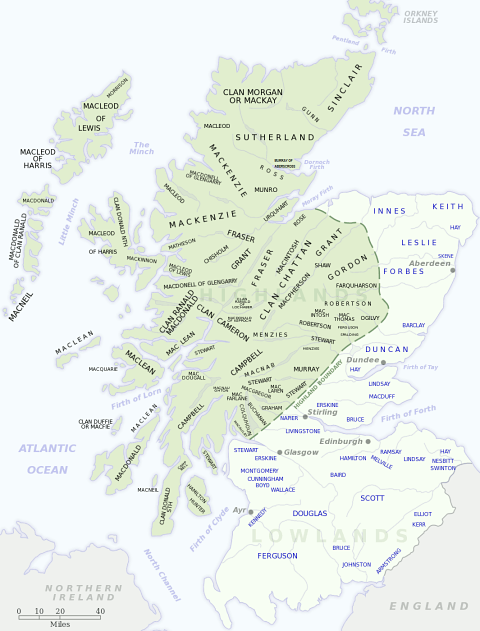
Distribution of Scottish clans and families
View larger map at Wikimedia Commons
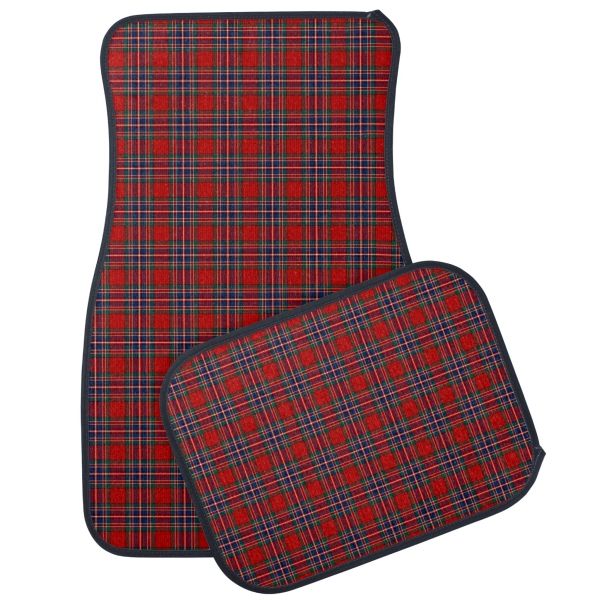
Browse the Clan MacFarlane Tartan Collection with home decor, personal accessories, crafting, paper products, and more.
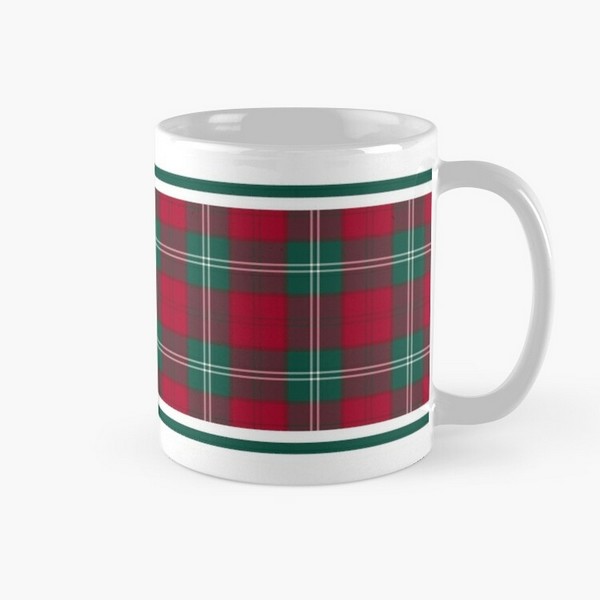
Browse the Lennox District Tartan Collection with clothing, home decor, accessories, electronics cases, and more.
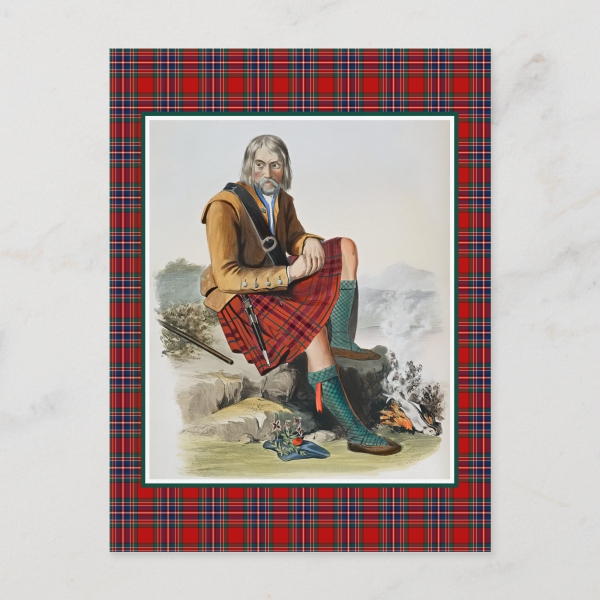
Clan MacFarlane Postcard: Digitally cleaned and enhanced vintage illustration with tartan border.